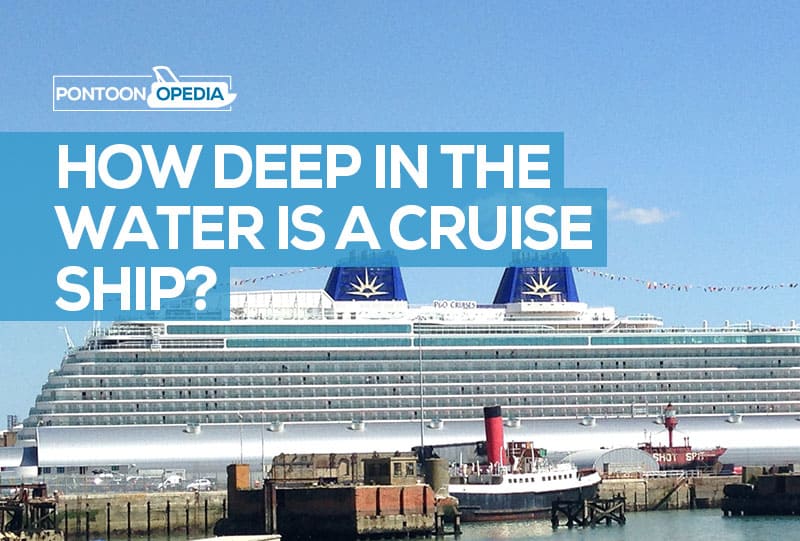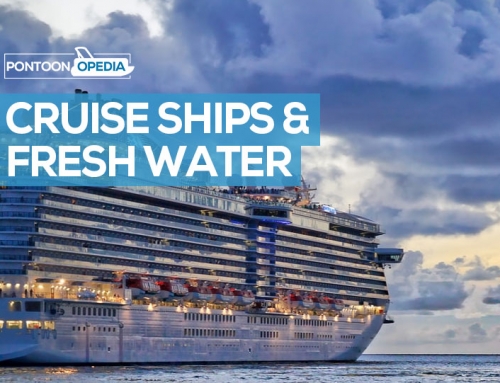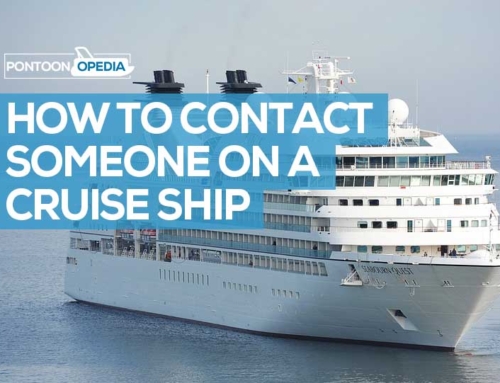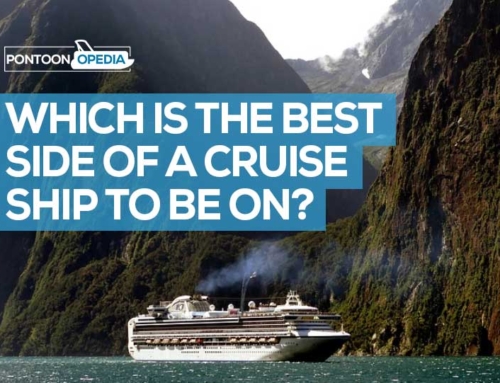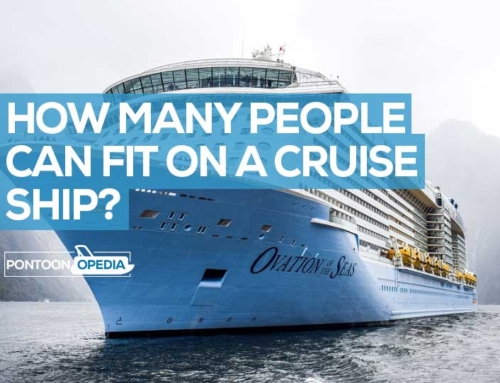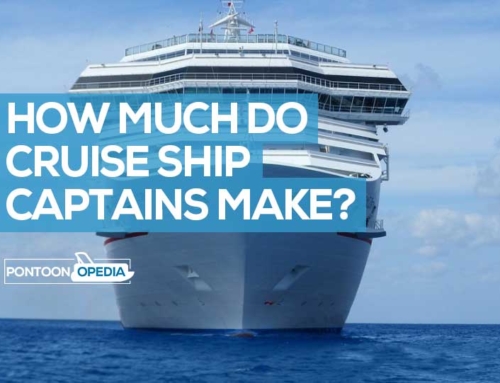Cruise ships are marvels of the ocean, allowing for a life of luxury on the open seas. Due the sheer size of them, a common question for people using them is how deep in the water is a cruise ship. While doing my own research on how cruise ships can stay upright with all of their extra weight, I also decided to look into how deep a cruise ship port needs to be and how much depth the boat needs.
How deep is the water where cruise ships dock? The depth of water that a cruise ship will need to dock in will need to exceed 25 to 50 feet deep. This takes into account the average draft of a cruise ship being 25 to 50 feet, which is the depth of water from the waterline to the bottom of the hull.
A lot of science and mathematics go into determining how deep in the water a cruise ship has to be. In addition, other factors can play a large role in how a cruise ship floats.
Table of Contents
How deep is a cruise ship is underwater?
Rather than trying to measure how deep a cruise ship is underwater by using feet, a better measurement for general use is measuring what percentage of a cruise ship is underwater. To do this, a few different things have to be measured.
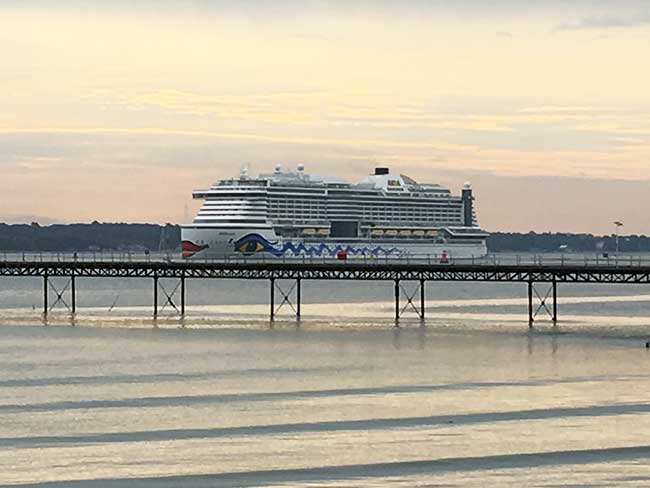
Water in a dock needs to be deep enough to take the draft of a cruise ship.
When boat architects are designing a cruise ship and determining the draft, they must consider a few different things. These include:
- The weight of the ship unloaded
- The weight of the ship when loaded
- The displacement of the boat
To begin talking about these different considerations, it’s important to define some common terms that will come up when discussing this topic. A boat’s draft is how deep it is in the water from the water line to the bottom of the hull. Essentially, this is the bare minimum depth of water a ship needs to sail safely.
A boat’s displacement is the most important number to know to safely keep a cruise ship floating. Essentially, the displacement of any boat is how much water the hull moves in weight. A boat’s displacement is equal to its weight.
This means that, for cruise ships, the displacement will change depending on how many people are on the vehicle and how packed it is.
Often, weight will not be measured for ships, instead using displacement for a more accurate measure. Due to displacement, heavier ships will be deeper into the water.
How much of a cruise ship is underwater then?
Now that it has been established that the amount of a cruise ship underwater will change, general amounts can be talked about. Of course, these percentages and ranges will adjust depending on weight, the choppiness of the sea, and a host of other factors.
How deep in the water does a cruise ship fit? In general, about 40% of a cruise ship is underwater. Some cruise ships, especially those large ones that stretch high into the sky, have less of their total ship in the water.
Cruise ships are designed to handle the significant changes in draft depth that can occur on the ocean, so the amount is always changing.
How do cruise ships float?
A common misunderstanding about cruise ships is that they have to have as much weight in the water as out of the water. While this can still allow for a cruise ship to float, it is not at all a requirement. In fact, most often a ship’s weight is not equally dispersed throughout the boat.
Floating through displacement
In reality, cruise ships and all boats float through the displacement of water. Displacement is how much water a cruise ship moves out of the way as it speeds through the water and is an essential measurement for a variety of important boating calculations.
Just because the water is being moved out of the way, however, does not mean that it’s helping the boat stay afloat. This is where the second principle of displacement plays a pivotal role.
As water is pushed away from the boat, it is moved out and down. This allows for the boat to sit on top of the space in the water that has been created. To keep it there, the water needs to come back.
Once the water has been moved out and down, it naturally tries to return to its previous position. To do this, it moves up and in. The mathematics work out so that these forces balance themselves out, allowing the ship to stay on top of the water.
The cruise ship’s hull
Although the basics of displacement stay the same across every kind of boat, different cruise ships and vessels utilize different types of hulls to have different efficiencies.
The hull of a boat is the bottom and the majority of it stays underwater. Often, hulls are curved to allow for water to slice easily in and out, allowing for quicker displacement.
There are many different types of hulls, but the most common types used on cruise ships is a round-bottom hull.
Round-bottom hulls are great for stability and smooth sailing. They are the most common hull for cruise ships due to the great ride they provide most passengers.
In addition, they work wonderfully for any large ship that does not need a great amount of speed. Round-bottom hulls look like large “U”s that come to a dull point in the front and back of the cruise ship.
Why don’t cruise ships tip over
While cruise ships can stay afloat fairly easily with only a few dozen feet of the boat under the waves, many still have enormous parts that fly stories high into the air. A common onlooker can observe a cruise ship and naturally wonder why it does not tip over when turning or while caught in heavy storms.
Cruise ships fight against turning over by managing weight effectively. In practice, this means a few different things. Steps taken to ensure the safety of a cruise ship include:
- Placing the largest, heaviest parts of the boat on the bottom
- Managing average weight placement and empty space
- Effectively designing the cruise ship to avoid large congregations of people at one place
Each of these contributes to keeping most of the weight of the cruise ship at or below the water level and evenly spread across the boat. In doing so, this reduces the effect that wind and turning will have on any upper levels.
Large parts on the bottom
This is one of the easiest ways when designing a ship to fight against any tipping. Incredibly heavy parts of a ship such as the engines, fuel storage, food storage, and sleeping quarters are almost always placed on the lower parts of the ship.
In addition to keeping the boat more centered over the water rather than on upper levels, this comes with the additional benefit of hiding away the more mechanical parts of a cruise ship which most guests would not care to see.
Managing weight placement
This is a vital part of designing any cruise ship, or even any boating vessel. The placement of weight on the ship is vital to ensure that nothing tips over and that one side is not much heavier than the other.
An easy to see example of this on cruise ships is the placement of sleeping quarters. If all the sleeping quarters for a cruise ship were placed on one side while there was no counterweight on the other, the boat would constantly lean to that side. This could result in a catastrophe, so it is important for architects to take that into consideration.
This generally means countering open spaces with other open spaces, keeping heavy things such as pools in the center of the ship, spreading out restaurants and other amenities across the ship, etc.
Effective design
Ultimately, the reason why cruise ships do not tip over boils down to one reason: effective design. The management of weight, placing large mechanics on the bottom, accounting for the movement of guests and crew; all of these and more are considered by the ship’s designers during the very earliest parts of the process.
Final thoughts
The reality is that most cruise ships don’t need super deep ports in order to dock. If your dock can handle a boat with a 25 foot deep draft, then that’s deep enough water for a cruise ship to fit.

